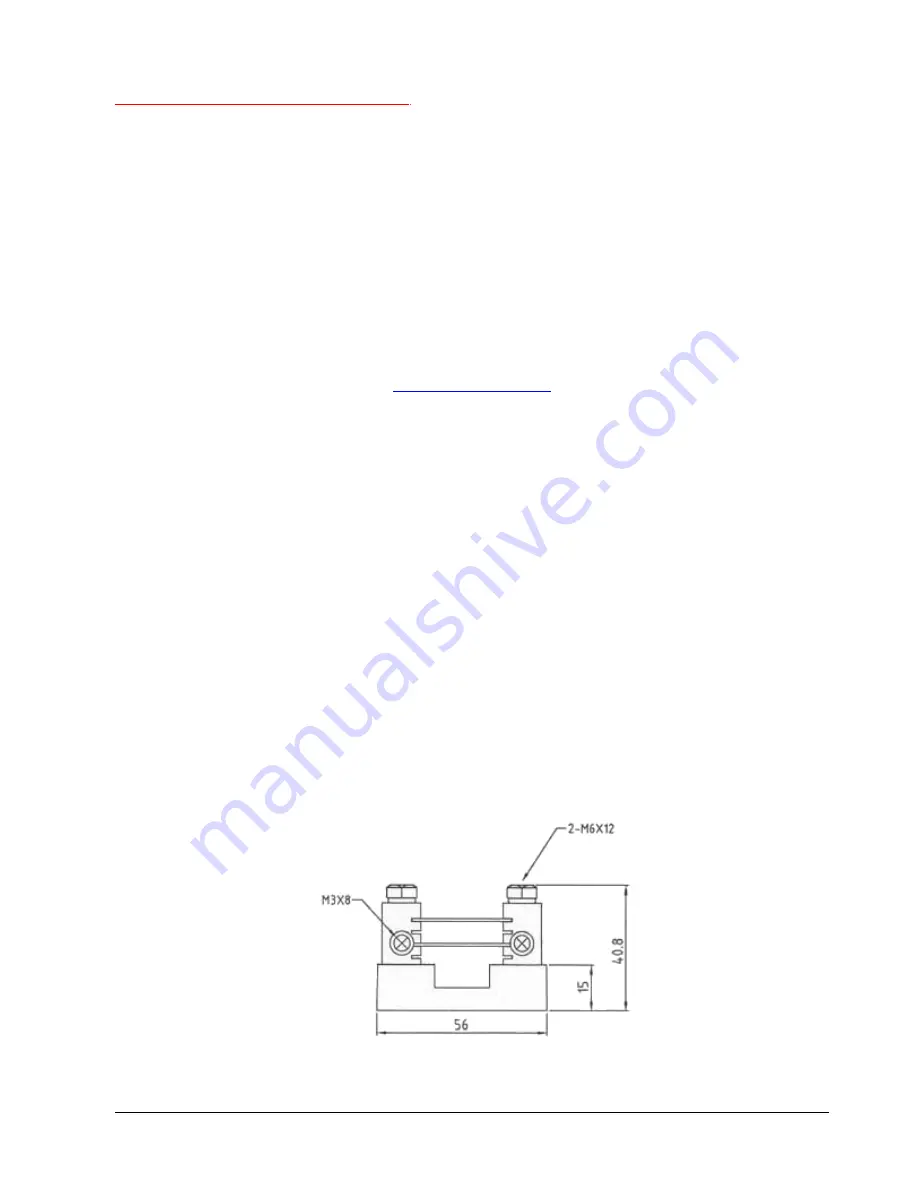
How to measure amperage by using a shunt
If you are managing a remote battery powered site, knowing your battery voltage is vital. It is
also a key thing to know how much charging you are putting back into your batteries, and how
much power is being consumed by your equipment. It is also a key thing to know how much
charging you are putting back into your batteries. Using a common shunt, it is possible to
obtain a millivolt reading that relates to an amperage reading. The voltmeters on the
RMS-200
board are perfect for this as they are very sensitive and can easily read millivolt readings. For
greater accuracy, put the
RMS-200
voltmeters in to low voltage mode by removing the mode
jumper for a particular voltmeter. Removing the mode jumper decreases the voltage range to
+/- 2.0 volts and increases the granularity for increased accuracy when measuring millivolt
values.
A word on shunts.
Shunts are defined as a resistive load through which electricity is diverted. Often the resistance
of a shunt is known precisely and is used to determine amperage by measuring the voltage
across it and using Ohm's law (I = V/R). It also allows high current measurements with low-
current equipment. Some popular shunts are 50mv/50amp and 100mv/100amp. The
relationship between the millivolt reading and the current going through the shunt makes
figuring out the amperage easy. For example, in the case of the 50mv/50amp shunt: if you had
50 amps of charging going through the shunt then the millivolt reading would be 50mv. If you
had 25 amps of charging going through the shunt then the millivolt reading would be 25mv etc
etc. When measuring current over 100 amps, continuous operating current should not exceed
2/3 ammeter shunt rating. To ensure proper operation, the shunt temperature is in no way to
exceed 145°C, as a permanent change in resistance will occur. For example, if continuous
current for an application is 500 amps, the ammeter shunt rating should be no less than 750
amps. This applies to both 50 and 100 millivolt current drop shunts.
Below is a drawing of a 50mv/50amp shunt.
Summary of Contents for RMS-200
Page 1: ...RMS 200 C EtherTek Circuits...
Page 2: ...O w n e r s M a n u a l...
Page 48: ...Block Diagram...
















































